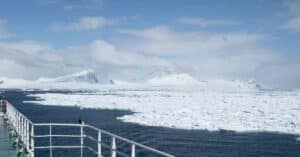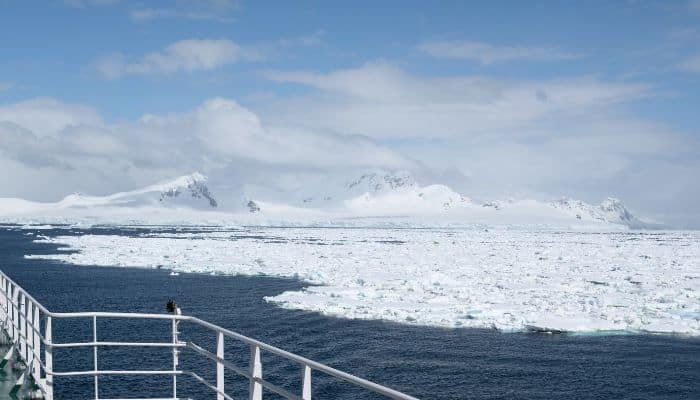
Indian Naval Ship Khanjar Arrives At Trincomalee
July 31, 2023
Burning Ship Towed To Temporary Anchorage Off Dutch Coast As Smoke Eases
July 31, 2023
Antarctica’s sea ice has reached historically low levels, deviating from its typical pattern. Researchers observed a significant decline, marking the lowest extent since records began 45 years ago.
During mid-July, the sea ice extent was 2.6 million square kilometres below the 1981-2010 average. Some scientists labelled this exceptionally rare, occurring once in millions of years. However, others caution against such terminology. Experts are now investigating the reasons behind this unprecedented decline.

Antarctic sea ice has shown fluctuating patterns, making it challenging to understand its response to global heating. Since 2016, a sharp downward trend has been observed, with climate change likely playing a significant role. The strength of westerly winds around Antarctica, linked to planet-heating pollution, contributes to the ice loss.
The drastic decline raises concerns about its impact on the global climate. Changes in ice cover can affect ocean circulation and wildlife habitats and contribute to rising sea levels. The implications could be far-reaching, threatening coastal communities worldwide.
Addressing climate change is urgent, as understanding Antarctic sea ice loss becomes a priority. The situation in Antarctica is more complex than the Arctic, with natural variability and potential climate change effects. Scientists stress the need to curb greenhouse gas emissions.
As researchers strive to comprehend the factors behind the loss of sea ice, their findings will shape policies to protect the fragile ecosystems of the Southern Hemisphere and global climate stability.
Reference: Economic Times, Clean Technica
Antarctica’s Ice Cover Shrinks To Unprecedented Levels, Breaks 45-Year Record appeared first on Marine Insight – The Maritime Industry Guide
Source: Maritime Shipping News


